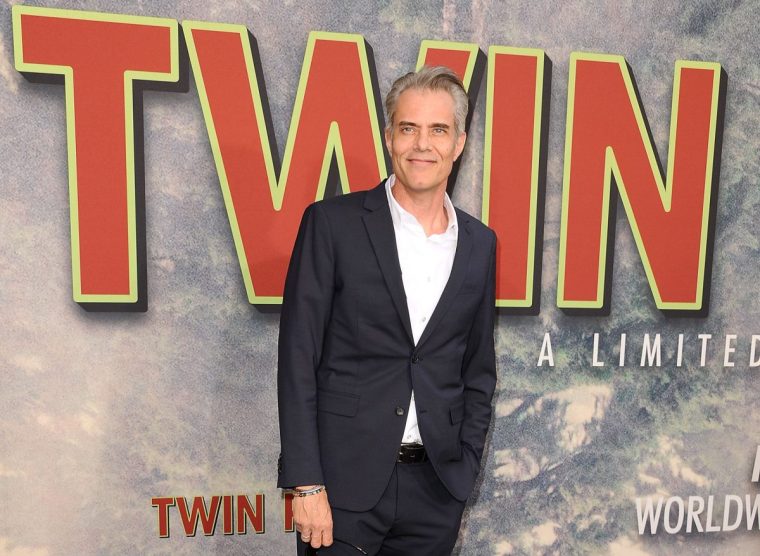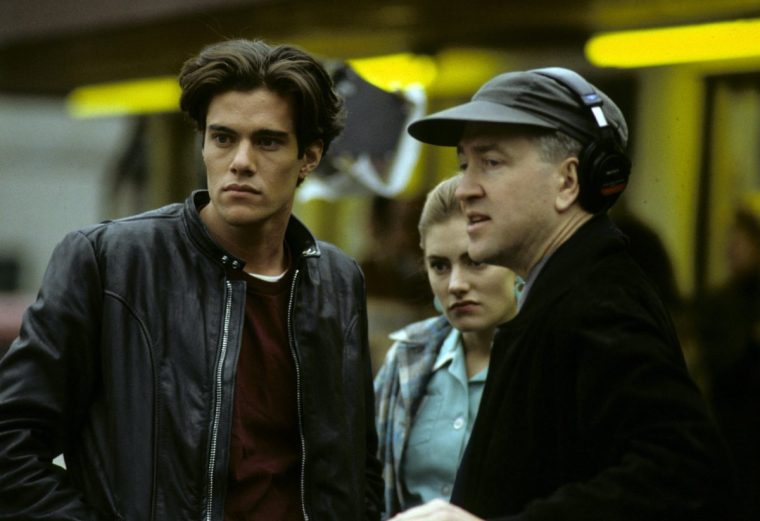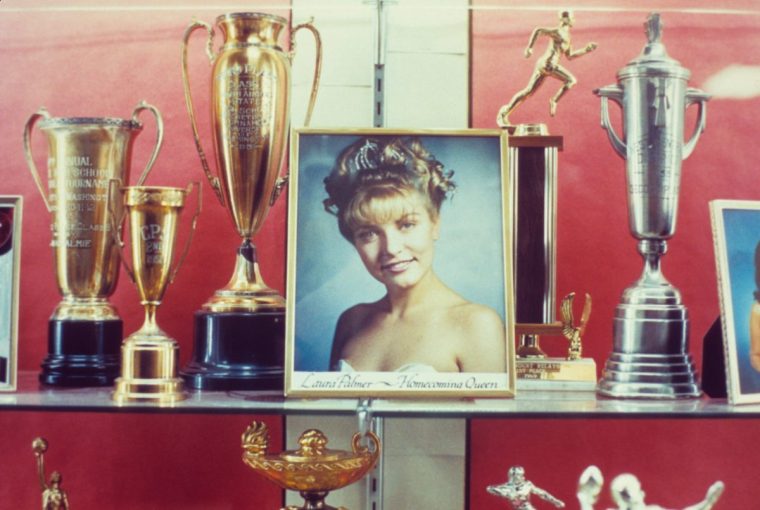Twin Peaks debuted on ABC on 8 April 1990. Over the preceding days, the network ran a brilliant teaser campaign in the press with a series of questions, white on black: “What’s the FBI doing here?”, “Would you like a doughnut?” and, most essentially, “Who killed Laura Palmer?” For creators David Lynch and Mark Frost, this murder mystery was simply the hook for a twisted small-town soap opera whose tone ranged from quirky comedy to hallucinatory horror, but the four-word question would become a national obsession.
Before that I was never even curious,” says Dana Ashbrook, who played Laura’s brooding, drug-dealing boyfriend Bobby Briggs. He laughs. “I’m not kidding. It was never about who killed her. To me, it wasn’t a mystery – it was just the story of this town.”
Twin Peaks was born out of an unlikely alliance. Lynch, the director of Eraserhead and Blue Velvet, had a unique mastery of images, music and mood. Frost, who had written for the hit cop show Hill Street Blues, understood the exacting rhythms of network television. When their first collaboration, a proto-X-Files show about alien-hunting detectives, failed to sell, they tried again. The vision of a dead girl in a lake led them to imagine first a town full of secrets in the Pacific Northwest and then the people who lived in it.
When Ashbrook received the pilot script (then called “Northwest Passage”) from casting director Johanna Ray in 1988, he was just 21 and wet behind the ears. “I had no clue,” he laughs. “The only thing I knew David Lynch from was The Elephant Man.” But he loved the script. “It was so funny. ‘Holy shit, what is this?’ I wanted to be a part of it.”

Lynch and Frost cast some established stars, like Blue Velvet’s Kyle MacLachlan, as Agent Dale Cooper, but for the teenage characters they wanted fresh-faced unknowns. Scorning the standard audition process, they chose faces they liked and invited them in for a chat. Fortunately for Ashbrook, the black leather jacket he wore in his headshot made him resemble a grunge-era update of a 50s bad boy, just like Bobby.
Speaking from his home in Los Angeles, Ashbrook still has the easy, grinning charm that made him one of the show’s most eloquent ambassadors. In his first meeting with Lynch and Frost, he was his usual ebullient self. “I’m not like Bobby Briggs at all. I’m more animated and goofy. At one point David said, ‘Well, you know, Bobby isn’t a real smiley guy.’ I said,” – he puts on a panicked voice – “‘Oh no, I’ll never smile again! I hate smiling!’”
Lynch and Frost began filming the pilot episode in February 1989 in Washington state, where they fostered a warm, familial working environment. Ashbrook bonded with his fellow newcomers, some of them even younger and greener than he was: Sherilyn Fenn, Sheryl Lee, Mädchen Amick, James Marshall, Lara Flynn Boyle. “It was all very positive and fun,” he says. “What was so beautiful was that nobody knew anything. Everything was a surprise.”
The cast was billeted at the Red Lion Inn in Bellevue. Ashbrook stayed next door to Boyle, who played Laura’s friend Donna, and just across the corridor from Lynch himself. “He definitely felt like a father figure to me. He brought us into his room after work one night and showed us this art he was making with chicken shit. I was not sophisticated in the slightest so it just blew my mind. I thought, ‘Oh my god, this guy’s crazy!’”

On set, the confidence of Lynch’s vision inspired complete trust. As he directed scenes, he would sometimes don headphones to use Angelo Badalamenti’s haunting score as a tonal guide, full of romance, beauty and dread. “David was very thorough,” Ashbrook recalls. “Everything was right there on the page. There was no fucking around.”
Not everyone at the network understood what Lynch was going for, but new ABC Entertainment head Bob Iger (now CEO of Disney) greenlit a further seven episodes to see it how it went, relocating filming to California to make life easier.
Iger’s bet paid off. Twin Peaks was greeted as something thrillingly new: cinematic, eccentric, mysterious, addictive. Almost 35 million Americans watched the feature-length pilot, which critics hailed as “the series that will change TV”. It’s hard to understand now how a show this strange could have been such a mainstream phenomenon, producing feverish speculation, viral catchphrases (“A damn fine cup of coffee!”), tie-in merchandise and overnight celebrities. Ashbrook suddenly found himself at the centre of the cultural conversation.
“You feel like you’re in a bubble and then all of a sudden more people know,” he says. “I had no idea of the magnitude of it. I had friends who were in college and I said, ‘Are you watching it?’ They said, ‘Watching it? I can’t go to a party without bringing a log” – a reference to the enigmatic Log Lady – “and a pound of coffee.’”

You can watch Ashbrook’s talk-show appearances on YouTube, full of charm and delight. “It was crazy,” he says. “I’d never been to New York City before doing David Letterman. People were recognising me on the street. I didn’t expect that. I didn’t even know any famous people.”
According to Frost, season one of Twin Peaks was conceived as a “nine-hour movie”. In the streaming era, season two would have been an equally tight eight episodes, but old-fashioned network economics demanded 22, of which Lynch directed just four. The pace was punishing. “It became a little bit more like a TV show,” Ashbrook sighs. “It was faster. It always changed when David came in to direct an episode, which probably drove the crew crazy because it was a much slower pace. But the more time we got to spend with David as actors, the better for us. We would come in on our days off just to hang out and watch him work.”
Season two’s high points still eclipsed anything else on television. For Ashbrook, Bobby’s defining scene came in the Lynch-directed first episode when his father (played by Don Davis) sat him down in the Double R Diner and shared his mystical vision of a happy, peaceful future. “There’s a lot of crazy stuff that happens in season two but I’ll always hang on to that scene. Don was great. He completely broke down in tears when he was telling me the story off-camera and that in turn made me cry. He really did it all.”
Overall, though, the season was frantic and sprawling, with numerous patience-testing sub-plots and a growing reliance on camp, low-stakes comedy. Ratings and morale went into freefall. ABC threatened to cancel Twin Peaks if the creators didn’t reveal the identity of Laura’s killer, only to cancel it anyway. Just 15 months after debuting as the hottest show on TV, Twin Peaks was over.

Ashbrook went straight into making the bizarre prequel movie, Twin Peaks: Fire Walk with Me, which was pure Lynch. With more mood than plot, more questions than answers, and some key actors too busy with new opportunities to make an appearance, it was a cult classic but a box-office bomb.
For the next 20 years, Lynch liked to say that Twin Peaks was “dead as a doornail”, but in 2012 Frost convinced him to consider a revival, on their own terms. On 6 October, 2014, Showtime announced that Twin Peaks was coming back. “I was dumbfounded,” says Ashbrook. “I couldn’t believe it. There was a lot of speculation among me and my friends: ‘What happened to Bobby?’ I didn’t know whether I was going to be some 500-pound dude, an elderly shut-in or just riding a bicycle through town, waving!”
He was pleasantly surprised to learn that Bobby had straightened up and joined the sheriff’s department. “I think there were people who expected Bobby to flip off the rails but he made it through to being an upstanding citizen.”
Ashbrook had kept in touch with co-stars like Amick and Lee, but there were others he hadn’t seen in 25 years, so it was an emotional reunion. “There’s a lot of love there,” he says. “When the older Twin Peaks people, the OGs, would show up, the new crew members were always reverent.”
This time around, Lynch directed every one of the 17 episodes without compromise. His death in January, at the age of 78, made Twin Peaks’ second chance all the more poignant. “Working on David’s set was always a treat,” Ashbrook says. “He was such an amazing guy. So fun to work with. Loved everybody, knew everybody’s name. I was always friends with David. Until the end I’d go over and have coffee.”
The audacious third season confirmed the inimitable power of Twin Peaks. Nine years before The Sopranos inaugurated the golden age of US television, it was so far ahead of its time that its influence on the medium took years to fully manifest. Thirty-five years on, it continues to fascinate.
“The show was a shift into a more cinematic look for television,” says Ashbrook. “It was a different thing. I wasn’t aware of it at the time but since then I’ve learned that it really changed television.”
So it really wasn’t about who killed Laura Palmer.
‘Twin Peaks’ is streaming on Mubi
